Abstract
In a Maine Area Health Education Center program some solutions were developed to the well-documented problem of health information material that cannot be read or comprehended by low literacy adults. Professionals in health education and adult education were trained to produce easy-to-read health materials and created dozens of low-cost pamphlets on the nation's year 2000 health objectives. The pamphlets are easily reproducible on a copy machine. Concurrently, a model for teaching oral communication skills to health care providers who deal with low-literacy adults was developed in partnership with Maine's largest rural health center delivery system. The train-the-trainers model reached more than 500 direct health care service providers. Participants in the two programs gained skills useful in all aspects of public communication that are replicable in other cities, States, and regions.
Full text
PDF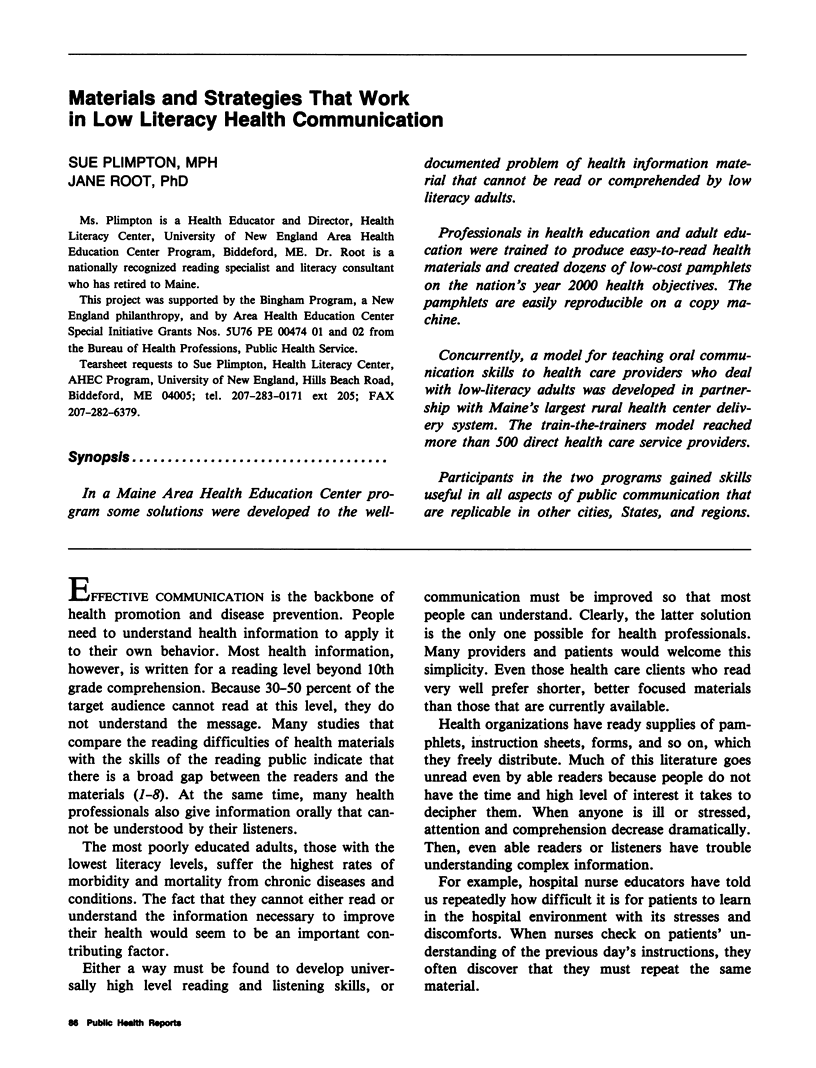
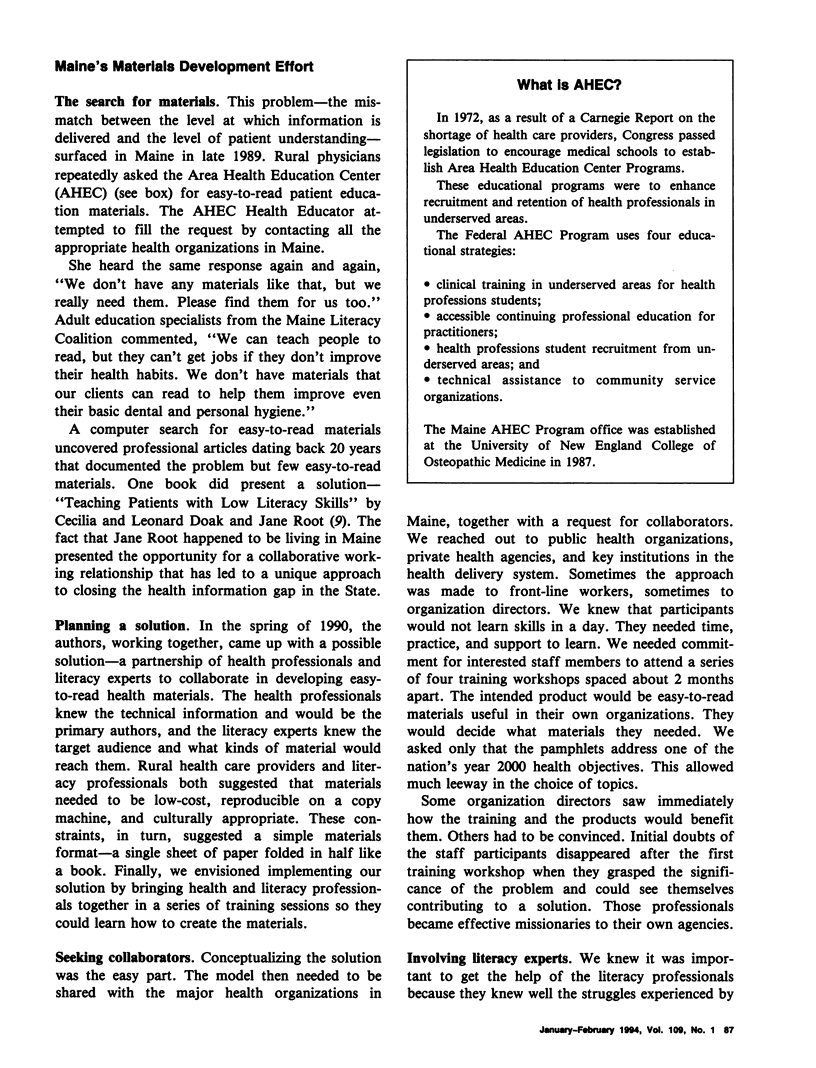
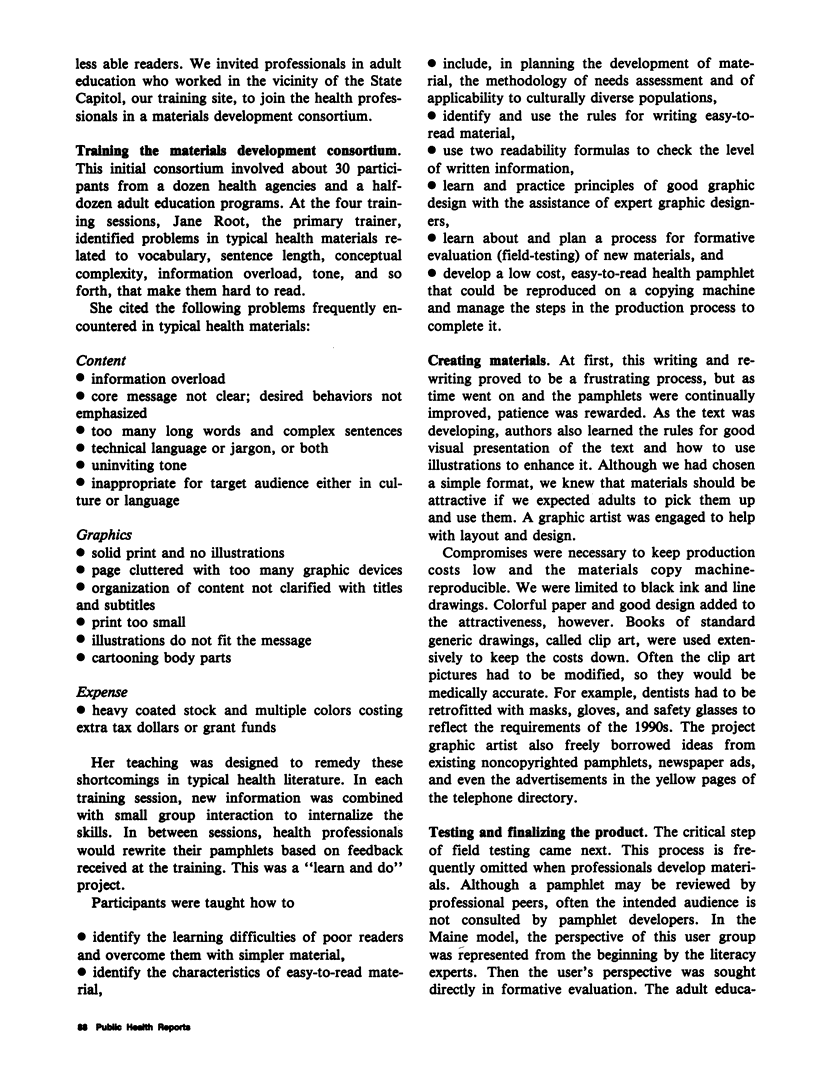
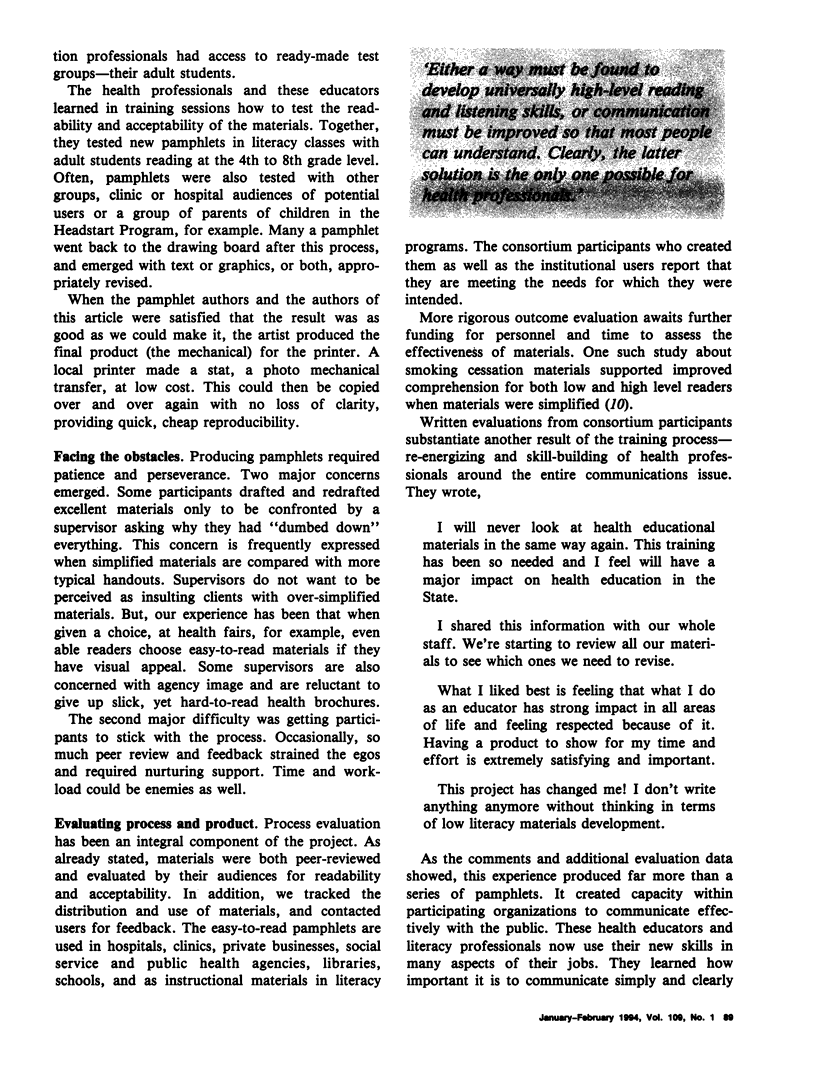
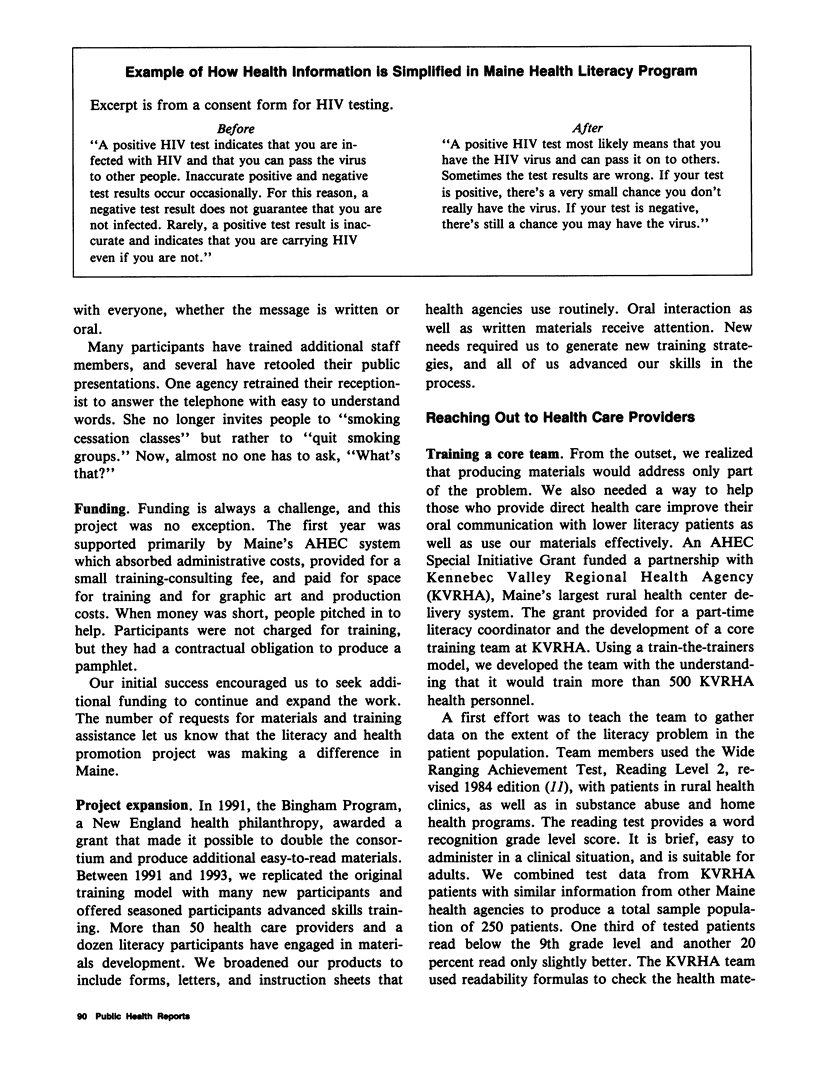
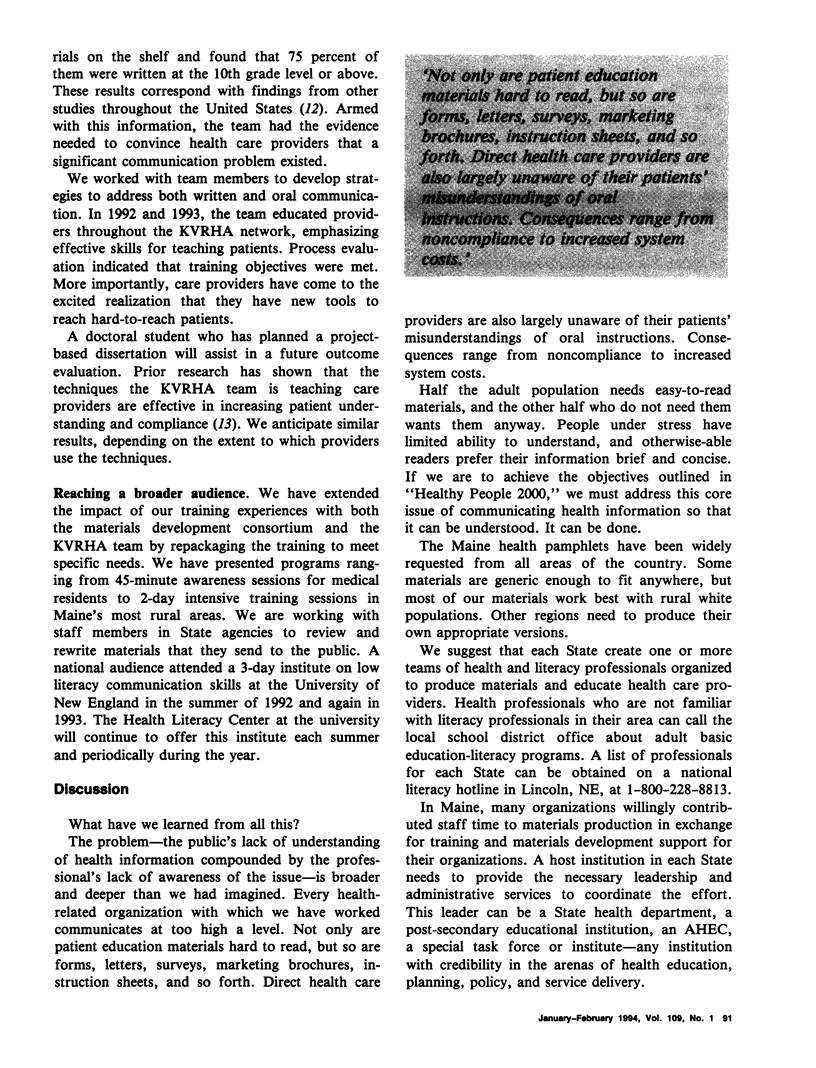

Selected References
These references are in PubMed. This may not be the complete list of references from this article.
- Davis T. C., Crouch M. A., Wills G., Miller S., Abdehou D. M. The gap between patient reading comprehension and the readability of patient education materials. J Fam Pract. 1990 Nov;31(5):533–538. [PubMed] [Google Scholar]
- Doak L. G., Doak C. C. Patient comprehension profiles: recent findings and strategies. Patient Couns Health Educ. 1980 3d Quart;2(3):101–106. doi: 10.1016/s0738-3991(80)80049-8. [DOI] [PubMed] [Google Scholar]
- Leichter S. B., Nieman J. A., Moore R. W., Collins P., Rhodes A. Readability of self-care instructional pamphlets for diabetic patients. Diabetes Care. 1981 Nov-Dec;4(6):627–630. doi: 10.2337/diacare.4.6.627. [DOI] [PubMed] [Google Scholar]
- Meade C. D., Byrd J. C. Patient literacy and the readability of smoking education literature. Am J Public Health. 1989 Feb;79(2):204–206. doi: 10.2105/ajph.79.2.204. [DOI] [PMC free article] [PubMed] [Google Scholar]
- Michielutte R., Bahnson J., Beal P. Readability of the public education literature on cancer prevention and detection. J Cancer Educ. 1990;5(1):55–61. doi: 10.1080/08858199009528036. [DOI] [PubMed] [Google Scholar]
- Richwald G. A., Wamsley M. A., Coulson A. H., Morisky D. E. Are condom instructions readable? Results of a readability study. Public Health Rep. 1988 Jul-Aug;103(4):355–359. [PMC free article] [PubMed] [Google Scholar]
- Streiff L. D. Can clients understand our instructions? Image J Nurs Sch. 1986 Summer;18(2):48–52. doi: 10.1111/j.1547-5069.1986.tb00542.x. [DOI] [PubMed] [Google Scholar]
- Zion A. B., Aiman J. Level of reading difficulty in the American College of Obstetricians and Gynecologists patient education pamphlets. Obstet Gynecol. 1989 Dec;74(6):955–960. [PubMed] [Google Scholar]


